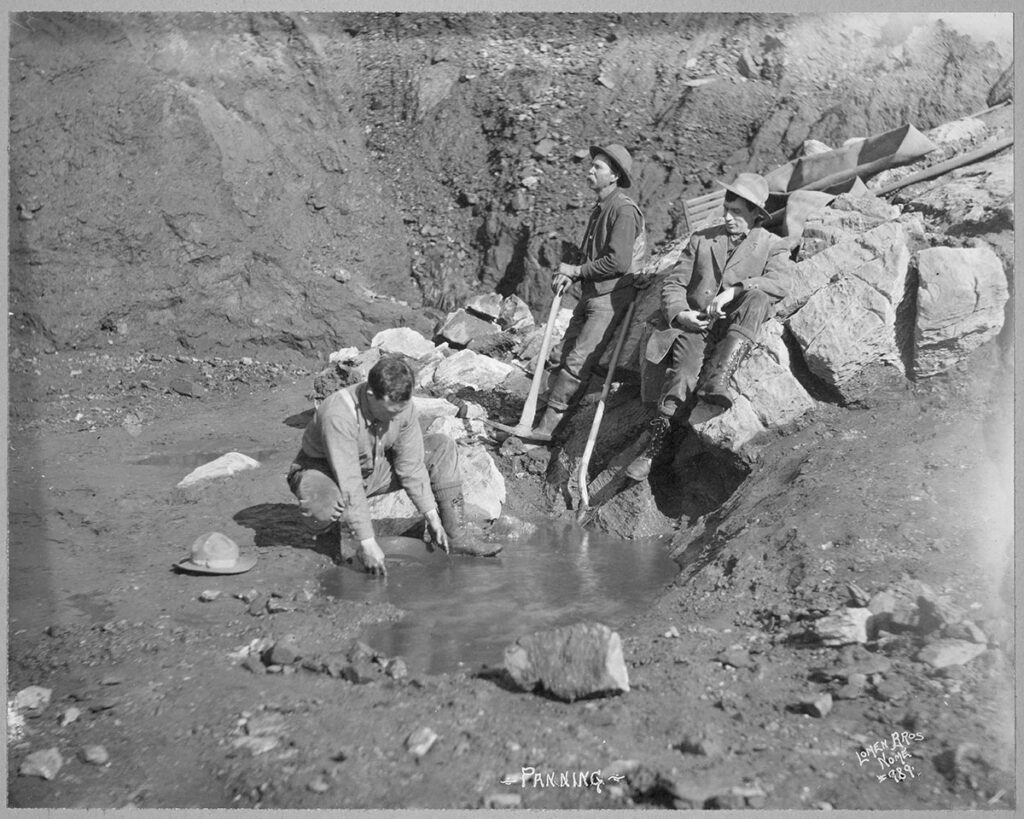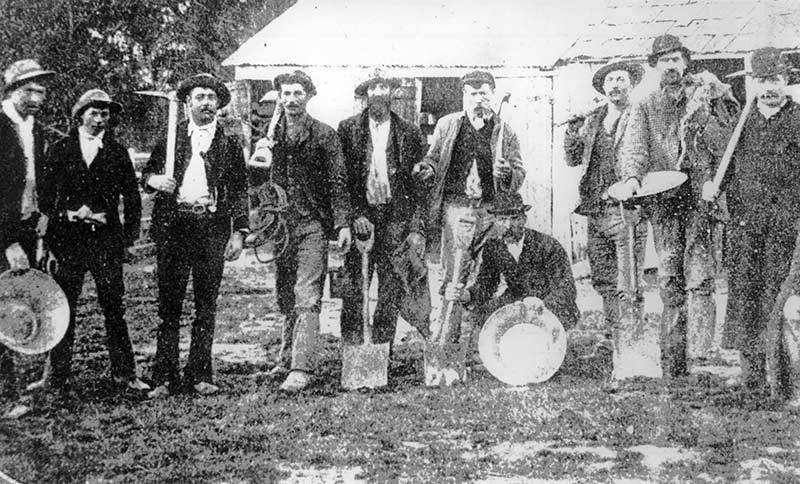Introduction
Gold has been a valuable and sought-after commodity for centuries, and the allure of finding gold still persists today. One of the most accessible ways to find gold is through placer mining, which involves searching for gold in loose or unconsolidated deposits in streams, rivers, or other bodies of water. Placer gold mining can be a lucrative hobby or profession, but it requires careful planning, preparation, and knowledge to be successful.
This comprehensive guide aims to provide readers with the necessary information and tools to find placer gold deposits. The guide will cover the basics of placer gold deposits, researching potential sites, prospecting tools and techniques, gold concentration methods, environmental and safety considerations, preparation and planning, fieldwork, and processing and refining gold.
By following the guidelines presented in this guide, individuals can improve their chances of finding and extracting placer gold deposits safely and efficiently.
Understanding Placer Gold Deposits
Placer gold deposits are formed by the accumulation of gold particles in sedimentary deposits that have been eroded from primary sources and transported by water. These deposits are often found in or near streams, rivers, and other bodies of water where the flow of water has slowed down or stopped, allowing the heavier gold particles to settle and accumulate.
Definition of Placer Gold Deposits
Placer gold deposits are loose or unconsolidated deposits of gold particles that have been separated from their original source and transported by water. These deposits are often found in alluvial or eluvial deposits, which are formed by the weathering and erosion of primary gold deposits.
Types of Placer Gold Deposits
There are two types of placer gold deposits: residual and alluvial. Residual placer deposits occur where the original source of gold is still in place, but the surrounding rock has weathered away, leaving the gold behind. Alluvial placer deposits, on the other hand, occur when gold is transported by water and deposited in river beds, sandbars, or other low-lying areas.
Formation of Placer Gold Deposits
Placer gold deposits are formed through a complex process that involves the erosion of primary gold deposits, transportation of gold particles by water, and the deposition of those particles in low-lying areas. The gold particles are often transported along with other sedimentary particles, such as sand and gravel, which can help to concentrate the gold particles in certain areas.
Understanding the formation and characteristics of placer gold deposits is essential for identifying potential deposit sites and determining the best methods for prospecting and extracting gold. In the next section, we will discuss the research and exploration techniques used to identify potential placer gold deposits.
Researching Potential Placer Gold Deposits
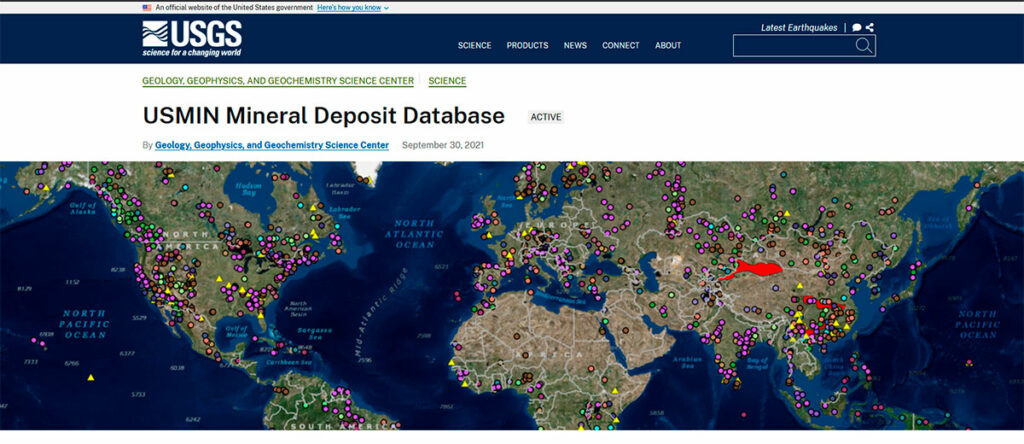
Before embarking on a placer gold mining expedition, it’s important to conduct thorough research to identify potential deposit sites. There are several research techniques that can be used to identify potential placer gold deposits, including historical research, geological research, and mineralogical research.
Historical Research
Historical research involves studying the history of the area where you plan to search for placer gold deposits. This can include researching historical maps, mining records, and other historical documents to identify areas where gold mining has occurred in the past. It can also involve talking to local residents or other miners to gather information about potential deposit sites. Most miners keep information close, but you can often find those that will share their knowledge.
Geological Research
Geological research involves studying the geological characteristics of the area where you plan to search for placer gold deposits. This can include studying topographic maps, geological maps, and other geological data to identify areas with the right geological conditions for gold deposition. Geological research can also help to identify potential hazards, such as landslides or rockfalls, that could impact your mining activities. Governments often keep records on mineral deposits that government geologists have accumulated over time.
Mineralogical Research
Mineralogical research involves studying the minerals and rocks in the area where you plan to search for placer gold deposits. This can involve collecting samples of sedimentary rocks, such as sand and gravel, and analyzing them for the presence of gold or other minerals that are associated with gold deposits.
By conducting thorough research, you can identify potential deposit sites and determine the best prospecting tools and techniques to use. In the next section, we will discuss the different prospecting tools and techniques used to search for placer gold deposits.
Prospecting Tools and Techniques
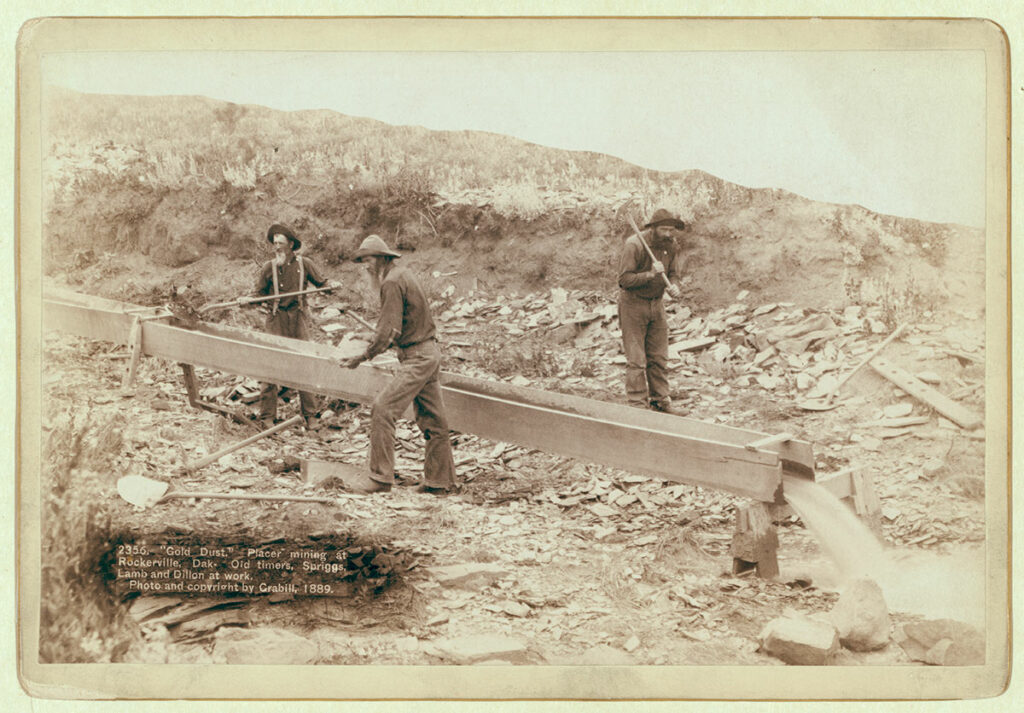
Prospecting for placer gold involves using a variety of tools and techniques to search for gold deposits. The most common prospecting tools include metal detectors, gold pans, sluice boxes, Highbankers, and drywashers.
Metal Detectors
Metal detectors are an essential tool for modern-day prospectors. They work by using electromagnetic fields to detect metal objects buried in the ground. Metal detectors are particularly useful for finding small gold particles that may be too small to see with the naked eye. Make sure that you use a gold detector that is built specifically for detecting gold to increase your accuracy. Minelab, Fisher, and Garrett all make metal detectors that are designed for finding gold.
Gold Pans
Gold pans are a traditional prospecting tool used to separate gold particles from sediment. They are typically made of metal or plastic and come in a variety of sizes and shapes. Gold pans work by swirling sediment in water and allowing the heavier gold particles to settle to the bottom of the pan.
Sluice Boxes
Sluice boxes are long, narrow boxes that are placed in a watercourse to separate gold particles from sediment. They work by allowing water to flow through the box, which carries sediment and gold particles along with it. The heavier gold particles settle to the bottom of the box, where they can be collected. Some districts do not allow the usage of sluice boxes in a watercourse. In this case you can usually use a highbanker outside of the watercourse.
Highbankers
Highbankers, often utilized in small-scale mining operations, are versatile and efficient gold prospecting machines that combine the benefits of a sluice box and a gold dredge. These multi-functional units are designed to process large amounts of gravel, sand, and other alluvial materials, enabling miners to extract precious metals with ease. The highbanker operates by using a water pump to feed a consistent flow of water into a hopper, where the material is washed and classified through a series of grizzly bars or mesh screens. This process removes larger rocks and debris, allowing the gold-bearing material to flow into the sluice box below. The sluice box is lined with riffles , matting, and miner’s moss, which trap gold particles as the water and lighter materials are washed away. As a result, highbankers offer a more effective and time-saving method for gold prospecting, enabling miners to maximize their gold recovery efforts.
Dredging
Dredging involves using a suction device to extract sediment from the bottom of a river or stream. The sediment is then processed through a sluice box or other gold recovery device to extract the gold particles. Dredging is normally a high regulated endeavour, so make sure you have all the necessary permits and licenses.
Dry Washing
Dry washing involves using a dry washer, which is a portable device that normally uses air to separate gold particles from sediment. The sediment is poured into a hopper, and air is blown through the sediment to separate the gold particles.
By using a combination of these prospecting tools and techniques, you can increase your chances of finding and extracting placer gold deposits. In the next section, we will discuss the different gold concentration techniques used to extract gold from sediment.
Understanding Gold Concentration Techniques
Once you have identified a potential placer gold deposit and collected sediment samples, the next step is to extract the gold particles from the sediment. There are several gold concentration techniques that can be used to extract gold from sediment, including gravity separation, flotation, leaching, and amalgamation.
Gravity Separation
Gravity separation is a common gold concentration technique that uses the force of gravity to separate gold particles from sediment. This technique involves shaking or vibrating sediment in a device such as a fine gold sluice box or a shaking table, which allows the heavier gold particles to settle to the bottom.
Flotation
Flotation is a gold concentration technique that involves using chemicals to separate gold particles from other minerals in the sediment. This technique involves adding a chemical to the sediment, which causes the gold particles to attach to air bubbles. The air bubbles are then separated from the sediment, carrying the gold particles with them. We don’t suggest this method for amateur and hobby prospectors.
Leaching
Leaching is a gold concentration technique that involves using chemicals to dissolve gold particles from sediment. This technique involves adding a chemical solution to the sediment, which dissolves the gold particles. The gold-containing solution is then separated from the sediment and processed to extract the gold. We don’t recommend this method for amateur and hobby gold prospectors.
Amalgamation
Amalgamation is a gold concentration technique that involves using mercury to extract gold particles from sediment. This technique involves mixing mercury with sediment, which causes the gold particles to form an amalgam. The amalgam is then separated from the sediment and heated to vaporize the mercury, leaving behind pure gold. Using mercury is dangerous and should only be used by qualified personnel under supervision. For amateur gold prospectors we suggest using fine gold concentrators such as cleanup sluice boxes, the gold cube, and miller tables.
Understanding the different gold concentration techniques can help you choose the best method for extracting gold from sediment. In the next section, we will discuss environmental and safety considerations that should be taken into account when prospecting for placer gold.
Environmental and Safety Considerations
Prospecting for placer gold can have both environmental and safety impacts. It’s important to take these considerations into account when planning your expedition to minimize your impact on the environment and to ensure your safety.
Environmental Regulations
There are regulations in place that govern the environmental impact of placer gold mining. These regulations may include restrictions on where mining can take place, limits on the amount of sediment that can be disturbed, and requirements for reclaiming disturbed areas. It’s important to familiarize yourself with these regulations and obtain any necessary permits before beginning your expedition.
Safety Precautions
Prospecting for placer gold can also pose safety risks, particularly if you are working near water or in remote areas. It’s important to take safety precautions, such as wearing appropriate safety gear, carrying communication devices, and working with a partner. It’s also important to be aware of potential hazards, such as rockfalls, landslides, and flash floods, and to have an emergency plan in place.
Ethical Considerations
Finally, it’s important to approach prospecting for placer gold with ethical considerations in mind. This includes respecting the environment, minimizing your impact on wildlife and natural habitats, and being respectful of other prospectors and local residents.
By taking these environmental and safety considerations into account, you can ensure that your placer gold mining expedition is safe and responsible. In the next section, we will discuss the preparation and planning involved in a successful prospecting expedition.
Preparation and Planning
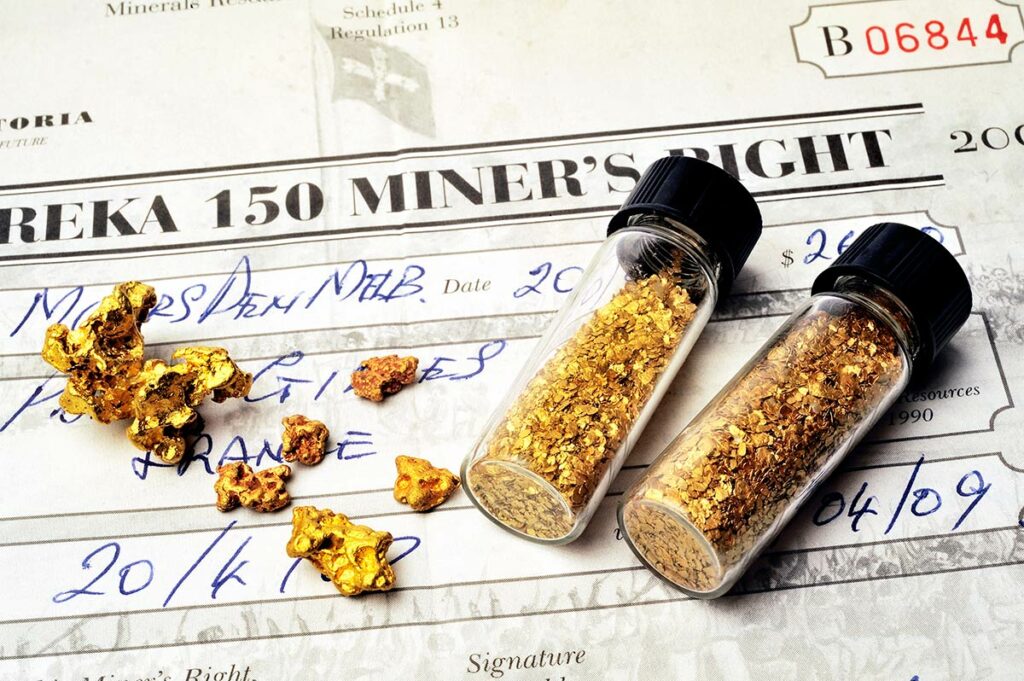
Preparation and planning are essential for a successful placer gold mining expedition. Before embarking on your expedition, there are several key steps that you should take to ensure that you are properly prepared.
Obtaining Necessary Permits
Depending on where you plan to prospect for placer gold, you may need to obtain permits or licenses from local or state authorities. These permits may include environmental permits, mining permits, or other regulatory permits. It’s important to research the requirements in your area and obtain any necessary permits before beginning your expedition.
Planning the Expedition
Planning the expedition involves identifying potential deposit sites, determining the best prospecting tools and techniques to use, and developing a schedule for the expedition. It’s important to plan for transportation, lodging, and food, as well as any necessary safety gear or equipment.
Necessary Equipment and Supplies
Before beginning your expedition, it’s important to ensure that you have all of the necessary equipment and prospecting supplies. This may include prospecting tools, safety gear, camping gear, food and water, and first aid supplies.
By properly preparing and planning for your expedition, you can minimize your environmental impact, ensure your safety, and increase your chances of finding and extracting placer gold deposits. In the next section, we will discuss fieldwork and the techniques used to locate and extract gold.
Field Work
Fieldwork is the process of locating potential placer gold deposits and extracting gold from sediment. This involves a combination of prospecting tools and techniques, as well as careful observation and sampling.
Locating Potential Deposits
Locating potential placer gold deposits involves identifying areas with the right geological and mineralogical characteristics. This may involve studying geological maps and topographic maps, as well as conducting on-the-ground observations and testing.
Sampling and Testing
Sampling and testing are essential for determining the presence and concentration of gold in sediment. This may involve taking samples of sediment from potential deposit sites and processing them using gold concentration techniques such as gravity separation or leaching. The results of these tests can help to identify areas with the highest concentration of gold particles.
Gold Recovery Techniques
Gold recovery techniques involve extracting gold particles from sediment using prospecting tools and concentration techniques. This may involve using tools such as metal detectors, gold pans, sluice boxes, highbankers, dredging equipment, or drywashers. The choice of technique will depend on the characteristics of the deposit and the concentration of gold particles in the sediment.
By carefully selecting prospecting tools and techniques and using sampling and testing methods, you can increase your chances of finding and extracting placer gold deposits. In the next section, we will discuss the processing and refining of gold after it has been extracted from sediment.
Processing and Refining Gold
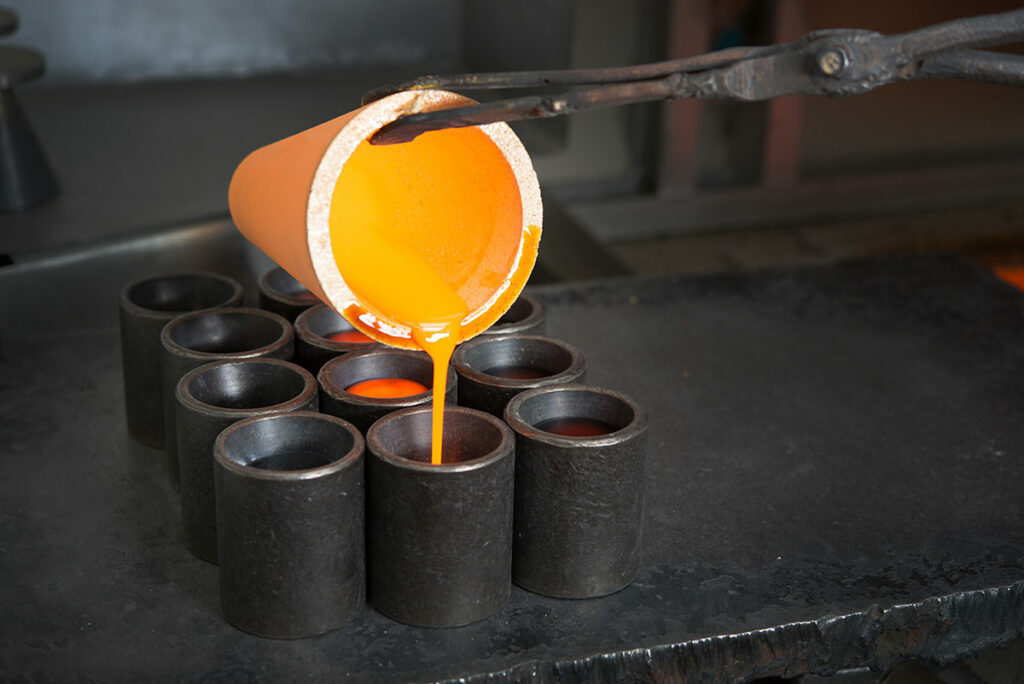
After placer gold has been extracted from sediment, it must be processed and refined to remove impurities and produce pure gold. There are several techniques that can be used to process and refine gold, including removing impurities, melting and casting, and selling gold.
Removing Impurities
Gold extracted from sediment may contain impurities such as rocks, minerals, or other metals. These impurities must be removed to produce pure gold. This may involve using techniques such as gravity separation, flotation, or leaching to separate the gold from other minerals and metals.
Smelting and Casting
Once the gold has been purified, it can be smelted and cast into a variety of shapes and forms. This may involve smelting the gold in a furnace or kiln and casting it into bars, coins, or other forms.
Selling Gold
Finally, the purified and refined gold can be sold on the open market. Gold is a valuable commodity, and its price is subject to fluctuations based on market demand and other factors.
By properly processing and refining placer gold, you can ensure that it is of the highest quality and value.
Conclusion
Prospecting for placer gold can be a rewarding and lucrative hobby or profession, but it requires careful planning, preparation, and knowledge to be successful. In this comprehensive guide, we have covered the basics of placer gold deposits, researching potential sites, prospecting tools and techniques, gold concentration methods, environmental and safety considerations, preparation and planning, fieldwork, and processing and refining gold.
By following the guidelines presented in this guide, individuals can improve their chances of finding and extracting placer gold deposits safely and efficiently. It’s important to approach prospecting for placer gold with ethical considerations in mind, respecting the environment, minimizing your impact on wildlife and natural habitats, and being respectful of other prospectors and local residents.
Prospecting for placer gold requires a combination of skill, knowledge, and perseverance. With proper preparation, planning, and technique, anyone can embark on a successful placer gold mining expedition. We hope that this guide has provided valuable information and insights for those interested in the exciting world of placer gold mining.

